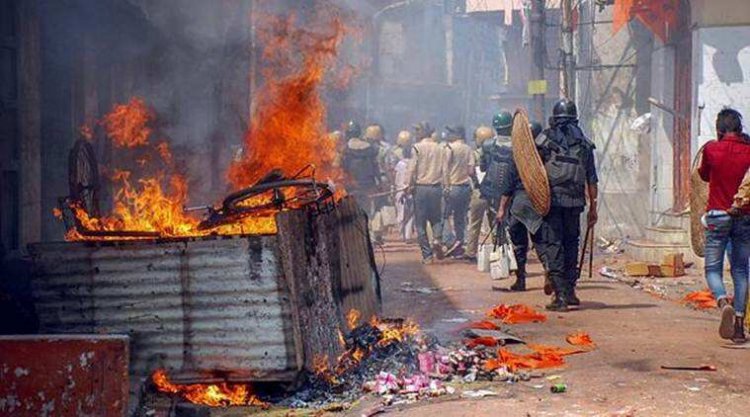Bihar, Bengal: Violent Communal Clashes
Asia News Agency

Sasaram and Bihar Sharif in Bihar and Hooghly and Howrah in West Bengal were rocked by violence during ‘Ram Navami’ (Hindu festival) celebrations. Clashes erupted while religious processions were being taken out — a virtual repeat of the disturbances that had scorched Delhi’s Jahangirpuri and Madhya Pradesh’s Khargone amid ‘Ram Navami’ and ‘Hanuman Jayanti’ (another Hindu festival) festivities in April last year.
It seems that no lessons have been learnt from those deplorable incidents, writes The Tribune. “The onus is on the state authorities to exercise due diligence while granting permission for such processions. No deviation from the earmarked route should be allowed; also, there should be adequate security along the whole stretch so as to deter troublemakers. There have been instances of organisers choosing communally sensitive routes with the objective of spreading hatred and turning their march into a show of strength and aggression. …
“Even though law and order is a state subject, the Central Government has a key role to play in defusing tensions. Unfortunately, the latest clashes have triggered a political slugfest between the ruling party at the Centre and the party/alliance in power in Bihar and West Bengal. A no-holds-barred blame game is in progress, with an eye on the 2024 General Election. As both states have sizeable numbers of Lok Sabha seats — Bihar has 40 and Bengal 42 — national as well as regional parties want to capitalise on any opportunity to boost their poll prospects.”
West Bengal example: the political context
In West Bengal particularly, writes Shikha Mukerjee (senior journalist based in Kolkata) “the outbreak of communal confrontation is being attributed by politically ambivalent local residents to ‘outsiders’, clearly with a vested interest in igniting trouble….
“The unidentifiable outsider as agent provocateur is a convenient presence for all political parties. It allows the Trinamool Congress as the dominant ruling party to reiterate that the politics of hate and hostility have been imported into West Bengal to wreck the tradition of communal harmony. It allows the BJP to distance itself from the aggressive presence of sword-wielding persons in its procession. It excuses the police for its professional failure to maintain peace and order…..”
The controlled but continuing violence in the state, according to Mukerjee “delivers specific messages to voters in rural Bengal where panchayat elections are due soon. It can be read as an appeal for consolidation of Hindu votes by the BJP campaign that the majority is unsafe and threatened in West Bengal, more so because the Trinamool Congress is shaky about its support from Muslim voters. It can be interpreted as an appeal to tolerant Hindus to support the Trinamool Congress or face the consequences of a manufactured volatility in the social equation. It can also be understood as a caution to Bengali-speaking Muslim voters that their best interests are protected by the Trinamool Congress.”
















